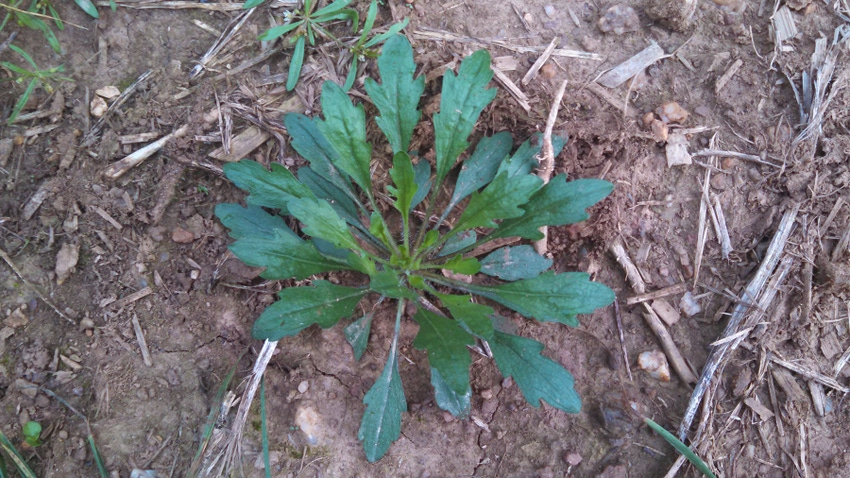September 29, 2023

by Dwight Lingenfelter
As temperatures get colder and a few snowflakes start to appear, some people may wonder if it is too late to control weeds — namely winter annuals and perennials.
Sometimes there is milder weather as late as November, so it can be a good time to consider spraying. In the fall, foliar-applied herbicides can be effective if the plants are green and appear to be healthy and actively growing.
Fall is the best time to control dandelions, while both fall and early spring are good times to control winter annuals — including marestail. In most fallow fields, a basic tank mixture of 2,4-D ester (1 pint an acre) plus glyphosate (1 quart) plus metribuzin (3-5 ounces of DF) will provide adequate control of marestail and other weeds such as dandelions.
It is relatively economical when sprayed in the fall. Application of 2,4-D alone controls many winter annual weeds, but 2,4-D will not control chickweed and is less effective on dandelions than when mixed with other herbicides.
Killing marestail in fall is usually easier since the seedling and rosettes are small, and they are more susceptible to herbicides. Once weeds such as marestail get through winter, their rosettes start to bolt upward in the spring, making them much more difficult to control.
Contact herbicides like Sharpen and Gramoxone —and systemic products such as glyphosate, 2,4-D and dicamba — are much less active when temperatures are cooler. Relatively speaking, 2,4-D is slightly more active than glyphosate in cooler temperatures — less than 40 degrees F — whereas dicamba tends to be more affected by cold weather, therefore tank-mixing it improves overall control.
Include a residual later
As we move into late November, since foliar herbicide effectiveness decreases, the inclusion of a residual herbicide may be desirable in corn or soybean rotations. If you include a residual herbicide, research over the past several years has shown that any chlorimuron-containing product — for example, Canopy or Cloak — is at the top of the list if soybeans will be planted next spring, and simazine is one of the better products for fields going into corn. Other products that have had success include Valor and Basis Blend.
In general, 2,4-D should be tank-mixed with any residual product.
Also, when applying systemic herbicides this late in the year, make sure to include an adjuvant such as ammonium sulfate or crop oil concentrate or methylated seed oil to ensure adequate uptake of the herbicide.
What to spend, when to apply
Fall herbicide treatments should be kept in the cost range of $5 to $15 per acre, if possible. Thus, glyphosate, plus 2, 4-D (or dicamba) can be an initial low-cost option to consider as this can provide control of a relatively broad spectrum of weeds.
For best activity, apply herbicides when daytime temperatures are above 50 degrees F and nighttime temperatures are above 40 degrees for several days during application time. Don’t apply herbicides immediately after a frost.
Research from Iowa State and Ohio State shows that many perennial and biennial weeds can still be effectively killed after a few hard frosts. Research with quackgrass and glyphosate found greater translocation of the herbicide after the first frost than before frost.
Plants having a prostrate growth habit, such as the biennial musk or bull thistle, will be more tolerant of frost since they are protected somewhat by heat released from the soil.
With most plants, it is possible to determine whether the foliage has been severely affected by frosts. Thus, scouting the field before application is important to ensure active foliage is still present.
Regarding quackgrass and Canada thistle regrowth after harvest, if these weeds are greater than 8 inches in height, then an application of glyphosate can provide good control of the above- and belowground plant parts. If temperatures drop below 28 degrees at night for more than four hours, these plants may die, and an herbicide application may not be effective.
Quackgrass can handle colder temperatures than Canada thistle. If warm temperatures (greater than 65 degrees) return for several days and the plants appear to be growing, an herbicide treatment may still be effective.
Lingenfelter is an Extension associate of weed science with Penn State Cooperative Extension.
You May Also Like




